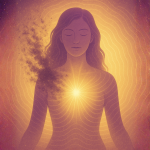Every morning, your brain embarks on a finely tuned journey—from the depths of sleep to the full clarity of waking life. This transition isn’t instantaneous but unfolds through a fascinating cascade of neural activity that reconnects you with the world. A recent study using high-density EEG sheds light on how this complex orchestration happens—and why sometimes you wake up alert, and other times, groggy
1️⃣ The Sequential Awakening of the Brain
Researchers monitored over 1,000 awakenings and discovered a consistent pattern: awakening begins in the frontal and central cortical regions, then spreads backward toward the occipital and temporal areas
This pattern reflects the brain’s architecture: arousal signals from deeper subcortical centers reach front regions first, and then propagate to the back. Think of it as a wave of consciousness washing from front to back.
🌙 REM vs Non-REM Awakening: The Difference
-
During non-REM sleep, awakening starts with a burst of slow-wave activity—our brain’s signature sleep waves—followed by a shift to faster, wake-like frequencies.
-
From REM sleep, the brain skips the slow-wave stage entirely and jumps directly into fast, wakeful activity
This explains why waking from non-REM often feels groggy (due to residual slow waves), while REM awakenings feel unexpectedly clear—until reality sets in.
⏱️ Why You Feel Alert or Sleepy
Not all slow waves are created equal. The study showed that certain “wake-up” slow waves just before you wake can actually enhance alertness, while others prolong grogginess. This insight helps explain that foggy feeling some mornings—or why others feel miraculously fresh.
🧠 The Consciousness Reboot
This gradual waking process is a remarkable filter:
-
Reorients your internal sense of self, connecting you to time, space, and environment
-
Rebuilds sensory awareness, enabling you to navigate your surroundings
-
Restores cognitive clarity, allowing decision-making and memory retrieval
By mapping this process with second-by-second precision, researchers offer new hope for treating sleep disorders and understanding brainstates in conditions like insomnia and coma
⚙️ Practical Takeaways
-
Timing your alarm: Avoid waking during deep non-REM sleep to reduce morning grogginess.
-
Light-based devices: Sharp morning light shifts brain activity faster toward wakefulness.
-
Gradual awakenings: Gentle sounds or light can better match your brain’s natural wave patterns.
🧘 The Spiritual Perspective
In a yogic frame, we rise from the depths of tamas (darkness) through rajas (activity) into sattva (awareness). This wake-up wave mirrors that journey—a reminder that true awakening unfolds layer by layer, gently and reverently.
🌅 Final Reflection
“Waking up isn’t an event—it’s an orchestration.”
Recognizing this natural rhythm can transform how we begin each day. Rather than force ourselves into wakefulness, we can allow our brain its graceful return to presence.









